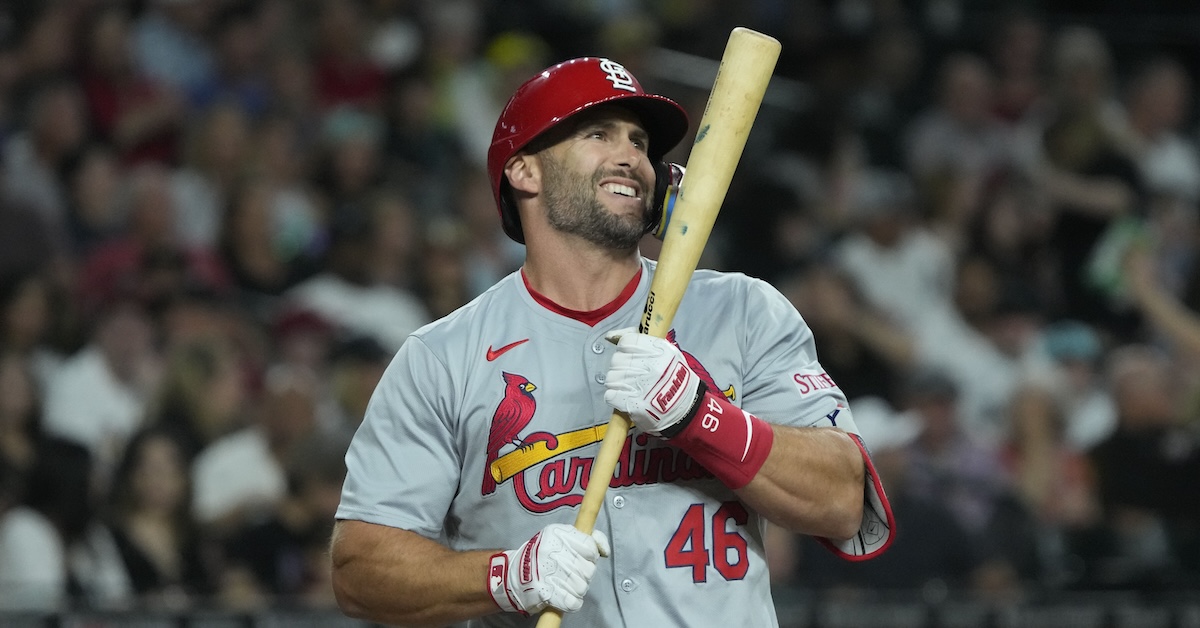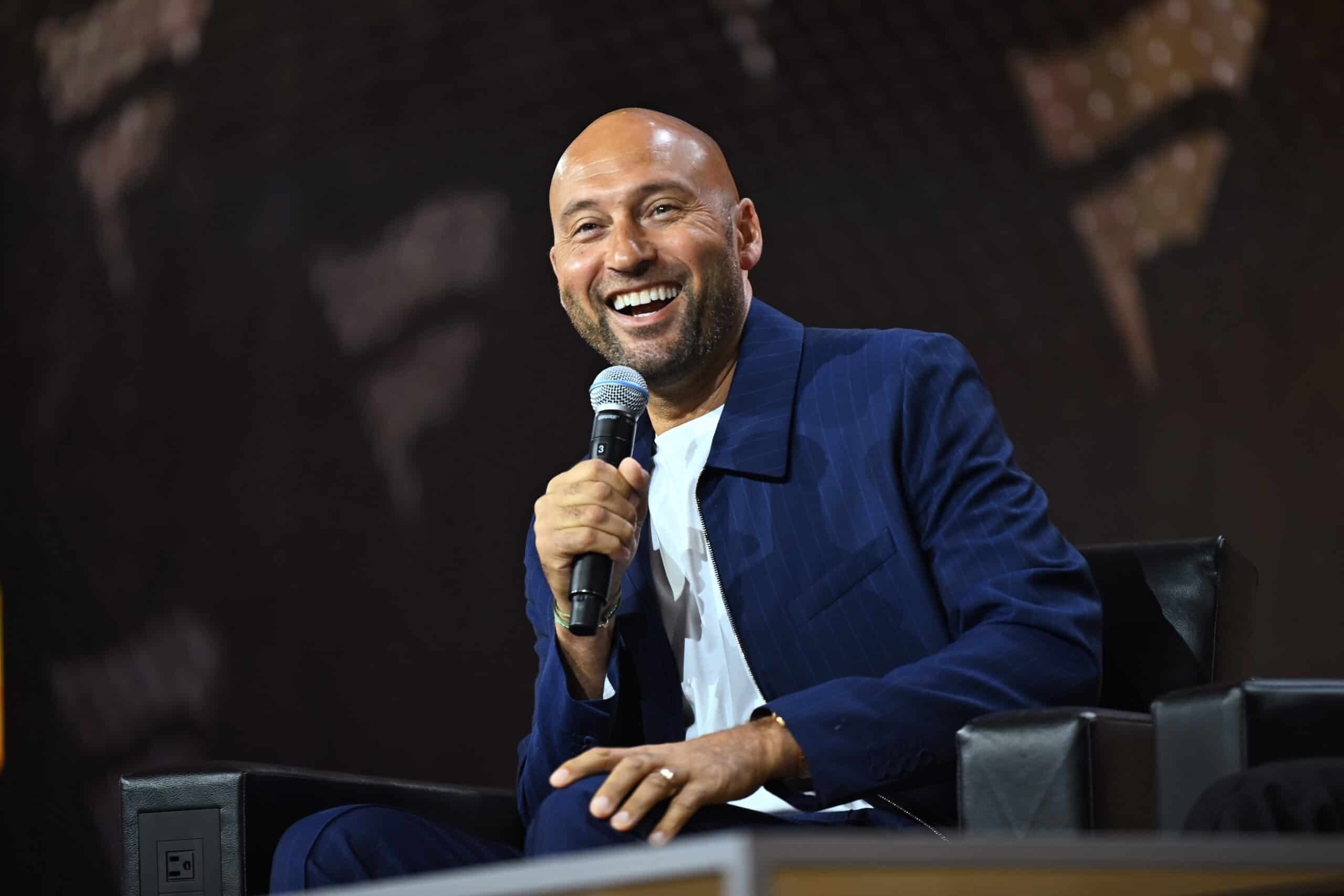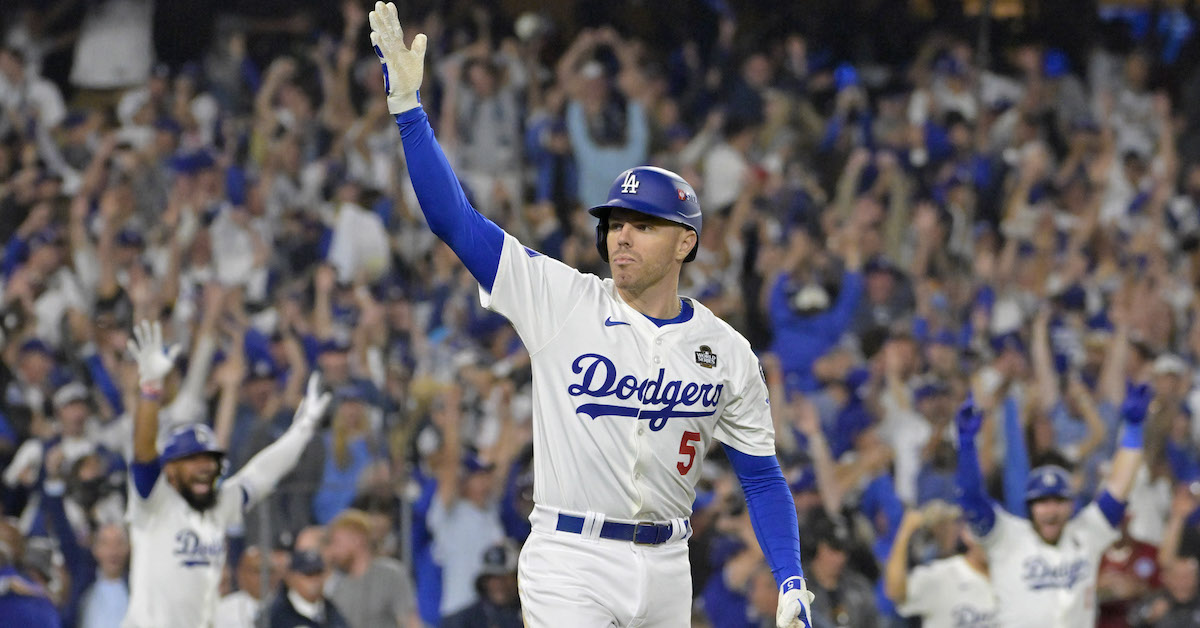[ad_1]

With five hits in a three-game span against the Diamondbacks and Mets, Paul Goldschmidt finally got off the interstate — to use former All-Star-turned-broadcaster Ken Singleton’s memorable term for hitters with a batting average below .200 — but as the end of April approaches, the 36-year-old first baseman has nonetheless produced at a sub-replacement level thus far. It’s early, but he’s got some company in that department among former All-Stars, as well as some high-profile free agents both past and future.
Goldschmidt won the National League MVP award in 2022, hitting a robust .317/.404/.578 with 35 homers; he led the league in both slugging percentage and wRC+ (176) while totaling 6.9 WAR. His value slipped to about half of that last season (3.4 WAR) as he batted .268/.363/.447 (122 wRC+) with 25 homers — respectable by most standards, but the lowest slugging percentage of his 13-year career to that point. Right now, both he and the Cardinals would gladly settle for that batting line, as he’s hitting just .208/.304/.287 with two homers, a 74 wRC+, and -0.3 WAR.
Goldschmidt is hardly the Cardinals’ only hitter who is struggling. Last week, the team optioned Jordan Walker, who was carrying a .155/.239/.259 (44 wRC+) line, back to Triple-A Memphis, but that hasn’t exactly cleared up the problem. Nolan Gorman (77 wRC+) and Lars Nootbaar (81 wRC+) have been terrible as well, and their center fielders, Michael Siani and the since-demoted Victor Scott II, have combined to “hit” .095/.170/.131 (-7 wRC+) en route to a net -1.0 WAR. Small wonder the team is second-to-last in the NL in scoring at 3.57 runs per game.
But this dive isn’t so much about the Cardinals as it is about Goldschmidt, whose offensive profile looks as though it has aged 10 years in the past two. After going 3-for-4 with a home run off the Dodgers’ Tyler Glasnow on Opening Day, he went 92 plate appearances (of which just 12 were hits) before collecting his second extra-base hit. He’s up to four now, having doubled both on Wednesday and Saturday. Just about everywhere you’d normally look for signs that things may not be that bad for Goldschmidt, they turn out to be pretty bad.
His swinging strike rate has spiked from 10.8% to 13.3%, his in-zone contact rate has plummeted from 79.8% to 74.2%, his chase rate has risen from 29.1% to 30.5% — and the gaps are even wider when measured relative to 2022. He’s striking out in 29.9% of his plate appearances, up from 23.4% last year and 21.7% in 2022. His batted ball stats? All down, from average exit velocity (from 91.3 mph to 89.3) and barrel rate (from 11.9% to 4.4%) to hard-hit rate (from 50.7% to 36.8%), xSLG (from .491 to .376) and xwOBA (from .367 to .315).
This could be just a slump, one that dates back to spring training (he went 6-for-47), or it could be a sign that age is catching up to the seven-time All-Star, who will turn 37 on September 10. His performance against four-seam fastballs doesn’t offer much comfort. He slipped from a .303 batting average and .559 slugging percentage against them in 2022 to .241 AVG/.450 SLG last year, and so far this year is at .229 AVG/.400 SLG; meanwhile, his whiff rate against the pitches has risen from 23.9% in 2022 to 25% last year to 33.3% this year.
He’s declined in Robert Orr’s SEAGER metric — which grades a player’s swing decisions based on the count, pitch location, likelihood of it being a strike, and the damage typically done on contact in that location — annually since 2020, from a score of 29.5 in the pandemic-shortened season to 17.4 last year and 14.8 this year. Digging deeper into SEAGER’s components, he’s taking more hittable pitches than before, and swinging at more bad pitches. That’s not a recipe for success.
Near the end of March, Goldschmidt acknowledged that spring training “kind of exposed some adjustments that I needed to make.” Said manager Oliver Marmol at the time, “He’s working through some stuff mechanically and from a timing standpoint.” Maybe Goldschmidt is just a tweak or two away from getting his swing back, and maybe his recent games are a positive sign; he’s averaged a 100.7 mph exit velocity with a 72.7% hard-hit rate on his batted balls over his past five games, and his rolling xwOBA over his past 25 PA is back above .400, as it is when he’s going well.
On the other hand, maybe this is the beginning of the end for him, at least in St. Louis, as he can be a free agent at the end of this season. Elsewhere, there’s hardly a shortage of players who are unexpectedly wallowing below replacement level through the season’s first month; with 44 out of 183 batting title qualifiers (24%) having entered Monday at or below 0.0 WAR, we’re bound to find some stars wandering on the wrong side of the tracks. Keeping in mind that some key stats like exit velocity, barrel rate, swing rate, and contact rate have stabilized (and working alphabetically), here’s a look at four hitters who particularly stand out to these eyes.
Randy Arozarena (47 wRC+, -0.4 WAR)
Arozarena made his first All-Star team last year while hitting .254/.364/.425 (122 wRC+), but a closer look shows wide monthly swings in his performance as the season progressed; he hit for a 36 wRC+ in July (.153/.223/.259), then a 148 wRC+ in August and a 93 wRC+ in September. In the throes of a 6-for-59 slump that includes hits in back-to-back games just once, he’s put up numbers that look a lot like last July, batting .152/.226/.257 with three homers but only two other extra-base hits in 115 PA.
Arozarena is swinging and missing more often, with a strikeout rate that’s climbed from 23.9% to 27.8%. He’s cut his chase rate substantially (from 30% to 25.4%) but he’s making much less contact in the zone (71.7%, down from 78.9%), and he’s been utterly overwhelmed by four-seam fastballs, hitting .074 and slugging .296 against them; his only hits against the heater are a pair of taters, offset by 13 strikeouts and a 35.1% whiff rate in 31 PA.
For what it’s worth, he is hitting the ball hard enough to have notched a 90.2 mph average exit velocity, but his barrel rate has fallen (from 12.3% to 6.8%) and so has his pull rate (from 41% to 34.2%). On that last topic, Rays hitting coach Chad Mottola believes that Arozarena’s desire to use the whole field more often may be backfiring, saying last week, “He wanted to use the right side of the field a little more often. It’s probably added length in his [swing] path. But you have to appreciate guys trying to get better and improve. You have to explore, and sometimes you go down the wrong road.” We’ll have to see if he can refine that approach more successfully, or whether reverting to his old ways bears more fruit.
Luis Arraez (107 wRC+, -0.1 WAR)
To be fair, this one might be a bit of a reach. After winning batting titles in both leagues in 2022 and ’23 and making All-Star teams in each of those seasons, the 27-year-old Arraez is hitting .305/.359/.364, which is actually above-average production, but only superficially useful. Though he’s never been a player who hits the ball very hard, his .059 ISO is the lowest mark of his six-year career, and he has yet to homer.
His 85.9 mph average exit velocity and 17.6% hard-hit rate are both career lows — the latter is the second-lowest among qualifiers, ahead of only Steven Kwan — and his 1.9% barrel rate is just 0.2% ahead of his rookie mark. Even given that he had great success in the past two seasons with pretty measly Statcast numbers (averaging 88.6 mph, with a 3.5% barrel rate and 27.6% hard-hit rate), this is pushing it. For as much as we should be cautious about evaluating offense based on small samples, we should be even more so when it comes…
[ad_2]



